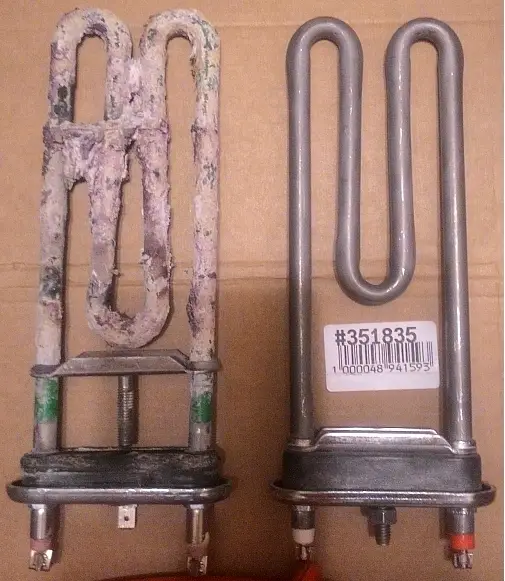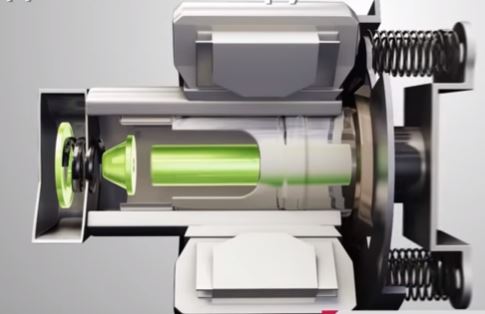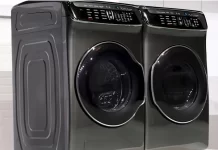Knowing when your washing machine has stopped heating the water can often be challenging. You may only notice it if you have a modern washing machine with a heating element control indicator. If your washing machine has this feature, you will see an error. However, it takes more work to notice in budget washing machines. Here are a few reasons why.
- Thermal insulation: Modern washing machines are well insulated against heat leaks. For a long time now, the tanks have been made of plastic, which has much lower heat loss compared to a metal tank.
- Differences in design: It isn’t easy to check the operation of the heating element in top-loading machines. If necessary, you must stop the wash cycle while heating and check. In front-loading machines, you can touch the door’s plastic to feel the heat, but there are nuances here, too.
- Low wash temperature: Modern fabrics are often washed at 30 degrees Celsius (85 degrees Fahrenheit), making it difficult to detect heat by touch.
How to determine whether the heating element in your washing machine is working or not
It is easy to check if the heating element in your washing machine is working correctly. Without loading the laundry, set the fabric type to “cotton” and select the maximum temperature setting. After 20-30 minutes, check whether the water has heated up. If it has warmed up, it means that the heating element of your washing machine is working. For front-loading machines, touch the door; it should be warm. In top-loading machines, stop the wash cycle, open the door, and carefully check the water temperature, as it may be very hot.
Possible causes of washing machine malfunction
Several reasons can explain why your washing machine is not heating the water. Here are a few
Wrong washing program: First, check which program you are using. Many washing machines have special programs, such as Jeans or Quick Wash, designed for lower temperatures. In these programs, you may not be able to see if the water is heating up.
The most likely cause is a faulty heating element. The heating element is responsible for heating the water in the washing machine. Over time, it can burn out or accumulate mineral deposits, reducing its performance. In this case, the heating element must be replaced.
Faulty thermostat: The thermostat regulates the water temperature. If it is faulty, it may not signal the heating element to turn on. While this problem is less common, it also requires professional repair.
Control board problems: In some cases, the problem may be related to the control board, which is the “brain” of the washing machine. Although rare, if the control board is faulty, it will affect the entire machine, not just the heating function. This will require a comprehensive repair.
Defective heating element, example
The heating element is always in contact with water and reaches high temperatures during operation. The water in contact with the element becomes very hot, often to the point of boiling. During this process, dissolved minerals in the water crystallize, forming solids that can stick to the heating element, eventually causing the heating element to look as shown in the photo below.
Preventing the formation of mineral deposits
To prevent this process, washing machine detergents contain special additives that prevent scale formation. However, detergent manufacturers cannot know the exact hardness of your water, so these additives are designed for moderately hard water. If you have very hard water, it is recommended that you use detergents specifically designed for hard water or add special additives to soften the water. For example:
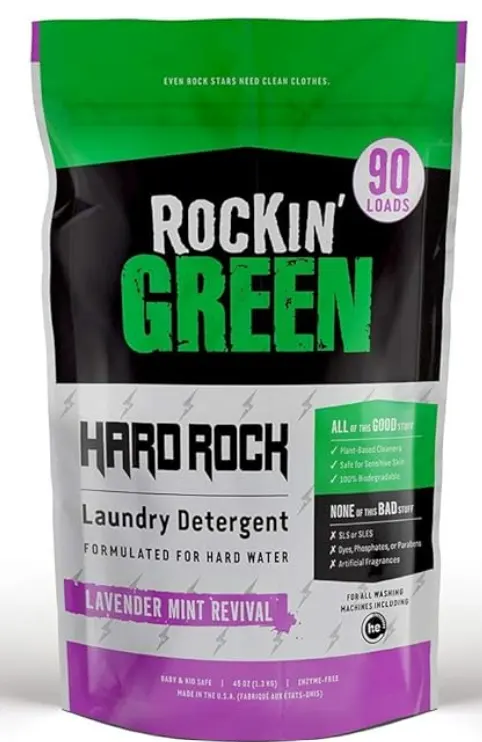
Rockin’ Green Hard Rock hard water laundry detergent is specially formulated for homes with hard water.
There are also detergent additives for water softening, these are added during washing to the detergent, for example:
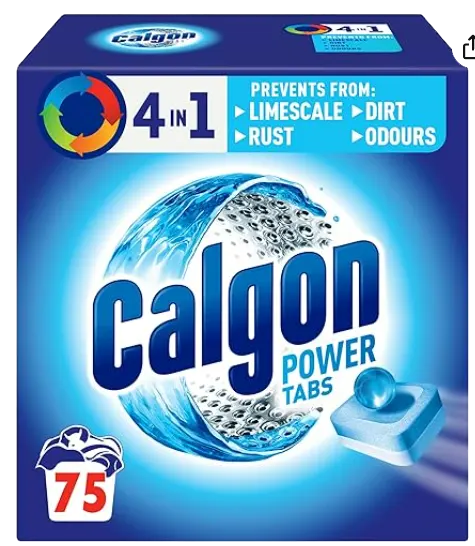
Calgon 4-in-1 Water Softener Tablets, Washing Machine Cleaner & Limescale Remover, Removes Odours, Limescale and Residue, Deep Clean
Summary:
If you have moderately hard water, you can use standard detergents because they already contain protective elements in the form of special additives. If you have very hard water, however, the use of special detergents and additives is justified.
If you find that your washing machine has no heat, find a specialist to repair your washing machine, in most cases it is sufficient to replace the heating element.



